In Bangkok, Cessaro Gamma II, with Ayon 300b monos and the Ayon Conquistador preamp
Compare notes of:
- American Sound (AS) 2000 vs Techdas AF1 premium vs EMT 927
- SME 3012r vs SAT using Opus on the AS
- Many cart compares with the SME 3012r using the EMT JPA 66 phono
If you have not read threads on WBF and/or Audionirvana on the AS, first go to the Appendix 1 at the bottom and familiarize yourself with the turntable. Regular readers can skip that part. Less than 10 tables were made in a one off production run to cater to a few clients by a vintage specialist named David Karmeli
We started with the American Sound (AS) 2000 having 3 SME 3012r arms with
- Airtight Opus through input 3
- Lyra Atlas SL through input 2
- VDH Master Sig Stradivarius, 0.5mv
The 4th arm was the SAT with the Clearaudio GFS which we added later through input 2.
- Input 1 – gain 60 db, sensitivity and resistance load 1mv, 200 ohms
- Input 2 and 3 – gain 71 db, sensitivity and resistance load 0.250mv, 47 ohms
The Ayon phono that comes in later has both inputs at equal setting, 71 db (same gain as input 2 and 3 of the EMT phono) and 400 ohms
On each record, I could play either of the carts, by just switching the knob to get the right phono input
Note
- It is important to note that I was here for 4 days. My conclusions changed as we moved from Day 1 to Day 2 to Day 3. So, if you start reading, and stop somewhere in the middle, you could be simply be reading a thought in transition.
- I have presented Day by Day, added quite a few notes record by record, which I am aware can be too much detail to follow in one reading. All has been summed up in the conclusion.
At ground zero with two bags of vinyl. This is Tang’s office. For those who do not know, the system is housed in his room where he works.
I initially ran through my violin LPs – Bruch Scottish Fantasia (Decca Speakers Corner), Cisco reissue of Heifetz playing Beethoven’s Kreutzer Sonata, Lalo’s Symphonie Espagnole by Henry Szeryng on Classic Records as well as on US ED1, and the same piece played by Ruggeiro Ricci on a Decca ED2. The Kreutzer also had piano, so I segued to an audiophile 45 rpm pressing of Beethoven’s Appassionata Direct Mastered on RCA, and the more natural pressing of Rubinstein’s Emperor with the BSO on an RCA Red Seal (here I prefer my US pressing to the UK SB so I use the US). I then added orchestral, which included a 45 rpm Analog Productions Reiner Scheherazade 4th movement, and Beethoven 9th Solti Speakers Corner first movement as well as the choral part, and Schubert’s 9th first movement on the RCA German pressing, which is better than my Krips Decca ED1. Vocals were compared using Choral as well as Winterreise on Melodiya with Peter Schreier and Richter.
The Atlas and the Opus sounded the most balanced in coherent terms when the larger pieces came in. This was also noticeable even on the orchestra in Lalo. I repeated the cart compares with different clamps – there was one from Dalby, as well as a steel one from American Sound. I wanted to check if the influence of the clamp could change one’s preference for a cartridge. My experiment with the clamps was non conclusive.
All this time I had been sitting leaning back in the chair. Then Tang said here, listen to the SAT + the GFS. He put it in phono 2, replacing the Atlas SL. Boom! The musical energy and timing on the 4th movement of Scheherazade was much higher despite the cart being cold. Peter Schrier lifted me out of my seat, egging me to stand up with the musical energy that was flowing through his vocals. Every note played by Richter had more authority, weight, nuance, control. I switched to the Lalo, the orchestral details and punch and dynamics were more. On Beethoven’s 9th, the SME Opus was much less detailed, while Tang applauded at the chorus on SAT. He then had to leave the room, but as the violins in the choral part came in, I was on my feet conducting vigorously, an energy I had been missing since morning.
Was all hunky dory? No. The SAT GFS combo was not working for me on the smaller violin pieces, due to violin tone being not natural enough. I am not sure why that was.
Tang came back, and mentioned that I should listen to the vdh through phono 2, as it was being held back by settings in phono 1. He switched, and now the SME+vdh indeed had more drive, the notes bloomed more, and as I listened, on all the violin pieces, as well as on the Emperor and the Winterreise, I preferred the SME+vdh more. This distance increased as I moved to solo violin with a Harmonia Mundi Bach’s Partitas. A very nice recording, and Tang’s system was playing this fantastic with the VdH. The SAT+GFS just was not working in this regard. We occasionally went back and forth to the Opus (the input three of the Opus had the same setting as input 2 of VdH).
Initially, I thought that SAT was able to exhibit more control of Heifetz as he sped through the Kreutzer – I could visualize his hand moving fast but with better control and timing between the notes, with more energy…but when the SME+vdh played through the higher gain input, it matched the energy and generally I preferred it on tone. Therefore, I ended my Day 1 thinking that two carts here are essential. One is the SME+VDH, and the other is a cart for large orchestra. All the non-VdH carts were more balanced on large orchestra. The Opus is possibly the most overall pleasing…by that, I mean it does not tip me over on the excitement front like the SME+VdH or the SAT+GFS do on certain passages, but it does not seem to disappoint on any front, and it sometimes matches the other two. Only with the luxury of the comparison allowed here does it lose out on some aspects to the VdH or to the SAT+GFS, but overall in isolation it can make one very happy. If I had to have only one cart, I would have the Opus, but if I could have two, VdH would be the first. So tomorrow, I need to try the Opus on the SAT
Day 2: Well tomorrow soon became today.
SAT vs SME 3012r using Opus: We again started with the Atlas SL in Input 2, and then switched to the SAT+Opus, which I preferred to the SME+Atlas SL again, reconfirming yesterday. I again felt that the SAT + GFS was doing some things better, but sounding a bit artificial.
Tang’s Tonearm guy, Pisit, then came over, and it was a pleasure to see him work. He is known to be one of the set up experts in Thailand, and visits Tang once a week to set up his arms and carts. He started off replacing the GFS on the SAT with another Opus, a newly refurbished one, not as burned in as the other.
So now we got to compare the SME with Opus to the SAT with Opus – in other words, the SME vs the SAT. Now, I observed that some of the hardness of the SAT+GFS remained despite the GFS being replaced by the Opus. There was just something hard about the SAT. We played various records with both of these, but I was still not satisfied with the SAT despite some sonic advantages, similar reasons to yesterday.
Techdas vs American Sound vs EMT 927
We then moved the SAT+Opus to the Techdas AF1 Premium with the Titanium platter. This would allow us a back to back comparison with the AS, except that the Techdas was connected to the Ayon phono, while the AS was to the EMT JPA 66.
I played most of the records back on the Techdas, with the Sat and the Opus mounted on it, through the Ayon phono. After playing the Techdas, I did a compare of the SAT+Opus on the Techdas to the SME+Opus on the AS. I occasionally also played the VDH while on the AS.
The Techdas+Ayon had a midbass bump. This was apparent from the first track played, Lalo Symphonie Espagnole, Szeryng. On piano it made the notes a bit rounded with that midbass. On the Lalo, and on other orchestral pieces, it was larger sounding and more explosive, especially in the bass, throwing out the stage more. Where the Techdas excelled, was on the big orchestral pieces. We played Scheherazde’s 4th movement all through. There was a much bigger and deeper stage, and as the music grew more complex the stage stayed better organized and more coherent, and the greater explosiveness was a plus. It was more layered. This was also obvious on the Choral, and on the Lalo. DDK, as per his philosophy, has kept the AS natural. So the soundstage of the AS is not manufactured…it gives a midhall perspective, without forcing anything on the listener. The Techdas does manufacture the stage and has a signature compared to the AS. The Techdas stage makes it fun and exciting on certain types of music, especially large tuttis, and my guess would be rock as well (though I did not try). On the smaller pieces like Winterreise, Scottish Fantasia, Kreutzer, etc, there was not much difference. In fact, the SME+VdH was the best. The manufactured stage of the Techdas made it a big negative for solo violin such as Bach’s Partitas, which was much more natural on the AS.
The other interesting point was that the SAT did not sound hard on the Techdas. I do not think the SAT worked with the AS, and was more synergistic with the Techdas. The Techdas with the Ayon also had a greater musical energy and drive, especially a midbass drive, and I could not be sure how much of this was the Ayon, and how much was the Techdas.
Tang at one point did mention the Techdas was fun and exciting on the big stuff. I called him over and showed him my scribbled notes, which had the exact same thing noted
The records were initially played on Techdas alone, then again to compare the AS and the Techdas record by record, and while we were doing that, Picit installed the GFS on the Axiom arm on the EMT 927. So then we compared the records yet another time on AS, Techdas, and the EMT. To compare the Techdas and the EMT, we just had to press a switch on the Ayon Phono. To move to the AS, we had to switch an input on the Ayon Conquistador preamp (which, incidentally, Tzbc bought to replace his AR Ref 6 (he also got to compare the FM Acoustics 155 in his system)).
As soon as I moved to the EMT, my first reaction was Wow! I have heard three EMTs before, and this was the second one with an external phono (internal bypassed). This had the most modern arm and cart of them all, and after being quite disappointed with the other ones due to their lack of resolution, this was by far the best EMT I have heard. In fact, it was a complete fun TT. To start with, each note on the EMT was the most powerful compared to the others. It was also the biggest sounding, sounding bigger than the Techdas. On Bruch Scottish Fantasia, the bloom and rise of the orchestra ruled the other tables. Ditto with Lalo Symphonie Espagnole. On piano, each note was bigger, unrealistically bigger, but the notes were not as nuanced as the Techdas or the AS. Apart from the nuance, where the EMT fell short was on big orchestral pieces, it did not have enough resolution of the Techdas…it was flatter front to back.
Tang had bought this from a top restorer, and worked away for 6 months to get its resolution close to where it is now. He mentioned that the detail and resolution had been nowhere at this level when he bought it, and he had to work on it. Therefore, readers should not expect to go out there and find an EMT 927 that sings immediately.
Both the EMT and the Techdas had some extra energy, so I can only imagine the Ayon phono was more synergistic with the rest of the Ayon system.
That was the conclusion on Day 2.
On Day 3, Tang had some morning work, so I went over to listen at 10:30. He had received a new set of records from vinyl_house_uk, and I thought I would reconfirm my findings from Day 2.
Meanwhile, towards the end of Day 2, a fourth SME had been installed on the AS, with a brand new Zyx Universe Premium
Short-Sleeves Only
Of the many records played that day, the SME+VdH on the AS sounded much better on all solo piano and violin. All. Slam dunk. I then switched to Opus and Zyx Universe Premium on the SME arms on the AS. The superiority of AS stayed. Anne Chaplin on Harpsichord was just fantastic with the VdH, and sounded poor on all other combinations on the AS as well as on the other tables. On the Harpsichord, it changed from this is amazing with the Vdh, to this is not worth listening with the others. The other cartridges could not bring out the Harpsichord tops at all, and with them it was akin to listening with the top half taken off.
Bach Sonatas and Partitas by Olof (violin) was better on all the three carts of the AS, as had been the previous Partitas LP on Harmonia Mundi.
On Piano, we played a few by Yvonne Lefebure, and also played a Bach Partitas on Piano, an amazing pressing that I will disclose after I buy it (it is rare). All the piano pieces were better on the AS – just better. It was pointless listening on the others.
Now, start scaling up to concertos, like Campoli’s Tchaikovsky concerto on an Analogphonic reissue (The Decca original is fantastic, btw, along with the Heifetz on RCA), and the EMT jumped in, as good as the AS.
I did not like a single piano on the EMT, reconfirming day 2. Notes are big, but just not nuanced enough. On Winterreise, Peter Schreier’s vocals sounded good, but Richter’s piano, not so much. And the AS had better vocals and better piano anyway. The highs on the AS were amazing, and would extend easily forever, so you could feel the vocalist opening his mouth more, and the voice rising more. If you have every compared a Berning Quadrature or a Spectral to a Vitus or a VTL, other strengths and weaknesses aside, the difference in the AS extension on the highs is like it would be with the Berning or the Spectral.
Techdas on these pressings played safe. There was nothing spectacular, nothing wrong. Nothing to write about.
I was now disturbed. Both with these new LPs, and with my own pressings played over the first two days. I was sensing more energy on the AS, and a larger sound closer to the EMT than before. The EMT and the Techdas had lost advantage from yesterday. I played both Ricci Decca ED2 and Szeryng Classic records Lalo to check – the Zyx on the AS was now almost matching the EMT on large scale size. Even in isolation, not comparing, the AS had more drive and energy than before, great transients, and amazing strike of notes and the hammer on the piano.
Tang returned from his meetings. I asked him, “Did you change anything on the AS rack, like gain etc”? He said, “I tuned the carts. Adjusted the VTA and the VTF. Yesterday the tonearm guy Pisit had set it up, today I did it based on David’s instructions. He taught me to listen to a few things on certain LPs before set up, and I used those tricks to fine tune the carts”.
Wow! Just Wow! A tonearm guy comes in, sets things up using tools, and I have certain findings. Tang comes in, fine tunes based on David’s instructions, and the findings are reversed. I was both elated and disappointed. Elated that SME 3012r when well optimized has such a big difference that it injects energy, size, impact, naturalness, all together to sound better than the TTs set up with SAT and Axiom. Disappointed that any other SME 3012r compare data points not done under David’s instructions are null and void (ok there might be other experts but not easily with the luxury of comparing such arms next to the SME). So I can’t go out tomorrow and compare SME with Arm X elsewhere. Of course, one can argue if SAT and Axiom were as fine tuned, they could be better. That is for another time.
Tang mentioned that he would try to tune the AF1 and the EMT for the next day as they were not optimized either
On day 4, Tang adjusted EMT and Techdas carts. While these two sounded better than yesterday; the AS was clearly better than the Techdas, with the EMT close, and now the pattern of day 3 was repeating and being confirmed. Of the many records played, Techdas sounded the best only on Scheherazade’s 4th movement. It was more organized, had a more layered stage, and a lower noise floor. In order to rule out advantages due to LP thickness and relative VTAs, I played the second movement, which goes through various individual instruments – violin, basoon, woodwinds, brass, etc – and the initial part is not a large full scale piece like the 4th movement, and found the EMT+GFS being the best here. Each instrument had more drive, bloom, and separation. Better tones, especially the basoon was so much better.
GFS sounded excellent on the EMT+Axiom, unlike with the AS and SAT. It has very good macro impact, great details, drive, and dynamic range. It is probably not the most nuanced either, like the VdH
On Schubert’s 9th, again the EMT was the best, followed by Techdas. The dynamic range of EMT and the flow of notes was excellent. Though it had lower resolution, the French horns at the start of the Schubert’s Great, the concert hall space in the recording space, the soft flow, made it more enjoyable.
Of all the other recordings tried:
- Olof Bach violin Partitas
- Bach Piano Partitas
- Oistrakh Scottish Fantasia
- Beethoven Emperor Rubinstein
- Heifetz Kreutzer
- Szeryng and Ricci’s Lalo Espagnole
The AS was the best with the EMT close, both an easy choice over the Techdas. There was a clear pattern that AS distanced itself on the solo, the EMT started catching up on the violin concertos. On Piano concertos, it was the lack of piano nuance that held the EMT back.
When we put a Itzhak Perlman’s Pagannini Caprices on an EMI postage stamp, we went Wow on the AS. Both the Opus and the VdH were outstanding, and the EMT 927 was next.
The EMT would have been the best table if it could get some of the nuance of the AS or the Techdas. It will be interesting to listen to the EMT with the VdH. Tang did mention that because of the way his Axiom is set, he cannot optimize the VTA completely, else the EMT would sound even better. The AS is the best table here, the strike of the piano notes just so dynamic, vocals have so much more openness, and violin is exquisite. The stage is neutral and usually midhall. The only thing it lacks compared to the Techdas is holding notes together and layering as large tuttis come in. It is not as large as the EMT, but after the initial wow on size for the EMT, you feel the AS is close. We even played a Mark Murphy jazz, again sourced from vinyl_house_uk, that made both of us tap our toes on the EMT and the VdH, and the dynamics and impact with the AS-VdH was just much higher. With the Techdas, it was meh.
So that leaves the Ayon phono vs the EMT JPA 66. We could not swap those because of some cable restrictions. I asked Tang what were his conclusions on the phono. He said that the Ayon has more midbass than the EMT, and is a bit more forward. The EMT is more transparent and nuanced, while the Ayon is larger sounding. In terms of drive, both are the same.
There are those who will argue having different phonos invalidates some of the compares. This is a data point. Techdas and AS are currently being played through Lamm and Allnic phonos in a Wilson Alexandria system. Anyone else can go there to verify some of these findings.
So what are the final conclusions, which stayed steady on Day 3 and 4?
- The first winner was set up of VTA and VTF. I mentioned the phrase musical energy quite a lot to Tang on the first two days. I notice I hardly mentioned it on days 3 and 4. That is because the energy was lacking on the first two days with the AS, so became a distinguishing feature, while once Tang tuned the carts in, AS got that energy and the lack of stopped bothering me.
- VdH master sig strad is just too far ahead of the others for violins, piano, natural tone, timbre, detail, small chamber, jazz. It is better on vocals too. It is extremely synergistic with the SME 3012r and the combination can be fixed for 100% of all such music – you would not need to change carts. It does lack some balance on the full spectrum of orchestral, though it has a great macro slam on the tympanis. Fastest transients. The VdH without compare has for me stood out in Munich 2018 in the Western Electric room on the Schick modded Garrard 301 with the Schick arm, and on the Kuzma Stabi M with the 4p in the Living Voice Vox Palladian room. Also Munich 2017 with the Schick modded Commonwealth. Compared to the Vdh, the Opus and zyx sounded more colored, less nuanced, less impactful.
- Opus was the most balanced of all carts on the AS, though not being anywhere close to the VdH on the music mentioned above
- GFS has a huge sound and great macrodynamics. It did not work with the SAT on the AS, but had fantastic tone on the Axiom on the EMT, great detail and separation, and a high dynamic range. The tone on the EMT was a winner except that it lacked the nuance within the notes
- Opus and Zyx were quite similar tonally, Zyx was probably a bit larger, Opus more dynamic and with more bite, though Zyx was burning in and Tang can report if this improves. Between the two, preferred the Opus.
- The AS was the most nuanced. It was also the most dynamic on piano hits, the ping of the notes was fantastic. Actually, I remember from my compare of the AS prototype here during my visit to David’s place three years ago that the piano was fantastic, and there too it was more detailed than all the other tables, Techdas, EMT, and Thorens reference included. Over there, I had felt the AS was a bit too analytical, but this improved version, not so.
- The AS did violin, piano, vocals, small chamber, better with Zyx and Opus as well, but was spectacular with the VdH. For such music, you would have just the AS with VdH.
- EMT is the only table you would need if it could add even some nuance from the Techdas or the AS. The power and drive and size of the EMT is excellent. AS is the only table you would need if it could add some layering and organization of the Techdas on large scale tuttis. The lack of nuance on the EMT is a dealbreaker if you are getting only one table and are a classical listener. It is a fantastic 2nd table.
- Additionally, AS is an analogphile’s playground. Four arms, you could have different arm cart combos, or you could have four arms of the same type and swap carts.
Can EMT add the nuance with VdH mounted on it, through the EMT phono, which is more nuanced than the Ayon? How does the SAT work with the VdH? The SAT designer Marc Gomez, Michael Fremer, and Myles Astor use SAT with Atlas as their reference. Anyway, here I did not see any reason for a tonearm other than the SME 3012r. Definitely, the SME 3012r once tuned in was sufficient to match or exceed the other set ups in tone, dynamics, swing, impact, authority, detail, agility, control, and bass. Did it matter if the others did one or two things more than the SME? Not really. I would be more interested in listening to the EMT + SME + VdH in the future.
I have added the word nuance here more than in my other reports. That is because it was a highly distinguishing feature that glaringly stood out.
I dropped out Atlas SL here quite quickly on both Day 1 and Day 2. It did nothing for me. I have heard the Lyra Atlas in multiple systems, done compares to Lyra Etna, Colibri, Koetsu Coralstone, Ortofon A95, Dynavector, etc. Over here, I preferred the Atlas to the VdH Master Signature, which, like Tang’s had 0.5 output. I have also compared the Atlas SL to the Opus in Gian’s system on a Bergmann Sindre to CH Precision, and preferred the Opus by a fair margin. Over here in this Magico Q7 system, I found the Atlas SL presenting information like an Atlas does, but not sounding as impactful or involving. It also sounded much richer than I have heard Atlas. I will get a compare of Atlas SL and Opus in another system on another arm.
The Techdas, the EMT 927, and the Ayon phono and pre were on the CMS rack, while the AS and the EMT JPA 66 were on the Stacore rack. More information regarding the Stacore exists via the WBF link below as well as the Stacore sub-forum on WBF.
David has been splendid in service. While he has less than ten AS clients to cater for, there are lessons all dealers, distributors, and manufacturers can learn here. He sent Tang a few carts to play with to choose. When the zyx universe premium was damaged while Tang was doing the anti skate, the second zyx arrived before the damaged the one was sent back. When a zyx was misplaced in the post, another one arrived, no excuses made. David initially realized that his platter had caused some attraction to the VdH magnet, damaging it. Therefore he produced a new platter so that Tang could try out the VdH.
Rest of the system: I have heard the Cessaro Liszt and Chopin up close before, and heard many Cessaros at Munich. The lower models are heavily compromised by compromising on bass and you can hear the incoherence through the crossover of the Liszts, as you can with the duos or the lower model of tune audios. However, the Gamma gets past those issues. Every horn requires the full range bigger brother to sound good, the compromised ones to me sound broken, and I would rather get a non-horn speaker. The Gamma does not have the closed baffle of the Liszt for the bass, and is extremely detailed and highly resolving. When the VTA and the VTF were not adjusted, I did not like the system. When the VdH was in Input 1, it did not sound good. Change it slightly, get it right, and the system comes to life. The sound stage on orchestra is huge, and the speakers can layer, but when the solo violins and piano are on it scales down proportionately in size. There was a round I did when I changed different LPs quickly on one table, did the same for the other table, then the next. All the LPs sounded different, and staged differently. Some inherent characters of the tables remained, which have been described above. I was able to listen continuously for hours on end without any fatigue, and appreciate the huge differences in performance and recordings enjoying the scale and the impact of the huge system. Thing with these speakers is, if you triple the room size, they will scale much more. However, unlike cones, they do not overload this room to fatigue.
I had been previously biased against Cessaros due to the compromised models, but this full range horn system is fantastic. So much resolution, decay, impact, scale. Sure, one could DIY something based on the Western Electric tonality…but that would be non-standard, non-commercial, and too subject to hit and miss. Once good recordings are played through them, they have much more real tone than the artificiality displayed at Munich.
Tang has tried all sorts of tables and carts and arms and phonos. He has a Kronos Pro in the room that is not used. He prefers the other three. The one thing he has not rolled much is amps, and he can try different flavors to find out if his current amps are Koetsus, Zyx, Opus, GFS or VdH.
Loading notes: The GFS did not sound right on the AS/SAT through the EMT phono at 100 ohms. I even bounced the GFS of the AS table to try and make it sound better. It sounded excellent on the EMT 927 with the Axiom arm and the Ayon phono at 400 ohms. Mike Lavigne loads his GFS at 360. Opus, Zyx, and VdH on the AS were all loaded into the EMT phono at 100 ohms, while the Opus on Techdas was in the Ayon phono at 400 ohms. We did not change the loading. If someone wants to they can request Tang to try that and report. He already has, and both he and DDK (David) found loading to not make much of a difference in this system.
Tonearms – I completely understand why Tang is replacing his SAT with multiple SME 3012rs on the AS. He already has two SATs and an Axiom. It would be interesting to see if each cart on the AS can be optimized to a different tonearm. For example, Tang has an SAEC that he will now use which is a heavier arm compared to the SME, or he could try an FR 66s, a linear tracker like Schroeder, and wood composite like Durand. Carts can then be rotated to find the optimal fit. I do not think tonearm compares are easily possible by one person. Ideally, you need an SME 3012r under David’s instructions, Durand under Mike Lavigne/Joel Durand’s guidance, a Schroeder LT set up by Anamighty Sound/Steve Dobbins/Frank himself, and some arms set up by a couple of guys in the UK like Mad Mik and Zerostargeneral. Tang’s Axiom has been personally set up by the designer Dietrich, who will be visiting him again to optimize his arm set up. A couple of veterans in the UK including GT Audio have mentioned that the M2 12r is a better arm. I heard the 3012r sing at Tang’s, in many ways over the SAT. I do not think the different people mentioned above are hearing that different, what I suspect is that each one has mastered his own skills for getting the best out of the respective arm, and you need to compare the arms only when fine tuned by those who advocate that particular arm.
Phono Eq note: During one break between compares, I tried various monos and pre 1960s originals – Columbia SAX B/S ED1 Death of a Maiden (Schubert), the Ricci Decca ED2, and monos on Columbia 33cx, Westminster, and a few others. I was trying out phono Eq on the EMT. Putting both knobs on the RIAA setting makes the sound rolled off, but in most cases while we had non-RIAA, the setting that we had seemed optimal across most of the LPs. However, this is something I want to explore further, also with the Thoress, FM, Allnic.
Appendix 1
Other far east installations of the AS – with the WAMM and the Vox Olympian
All the user comments, including details of the AS design, can be found on long threads on What’s Best Forum and Audionirvana. So there is a sufficient set of data points to cross check against.

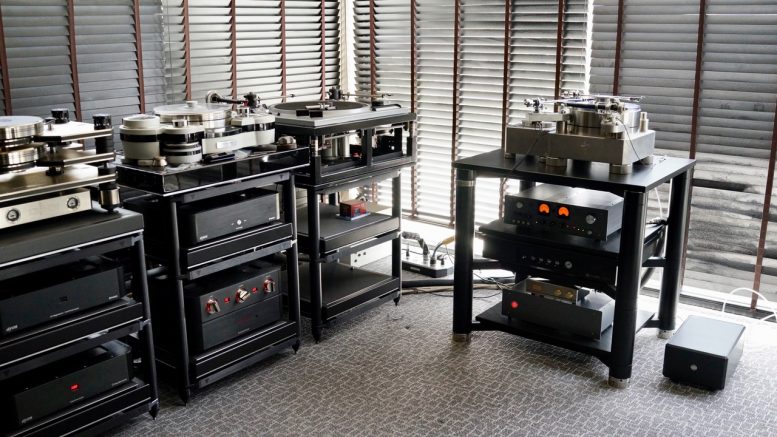
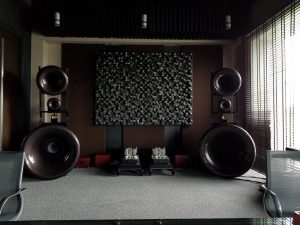
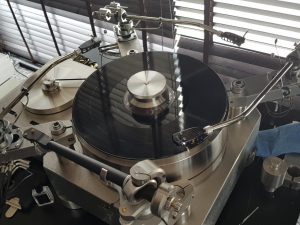
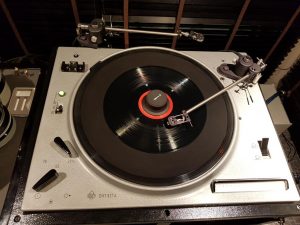
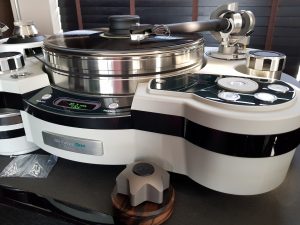
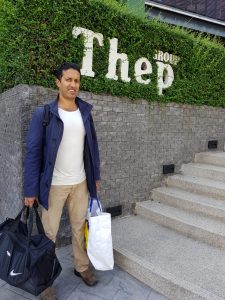
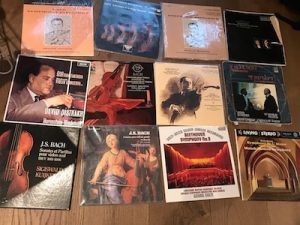
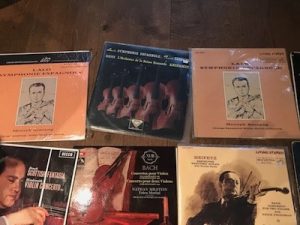
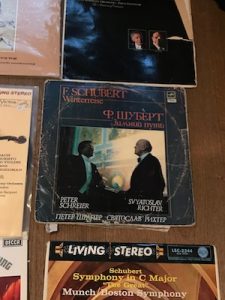
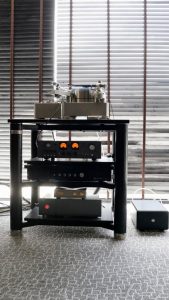
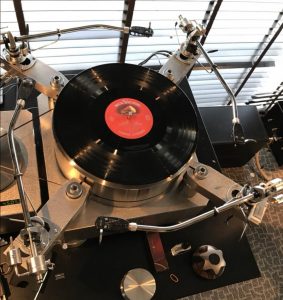
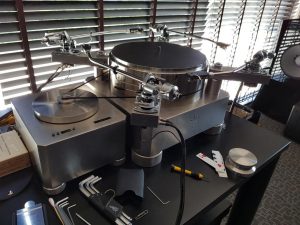
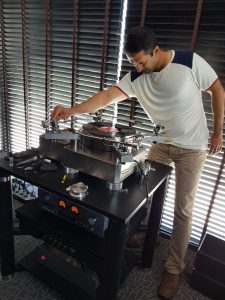
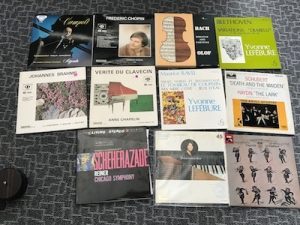
Bravo !! Bravo ..!!
Fantastic write up Ked, Your best Todate, you made it almost as good as being there , a pity you left out the critique on the food and of course non classical recordings …
🙂
Regards